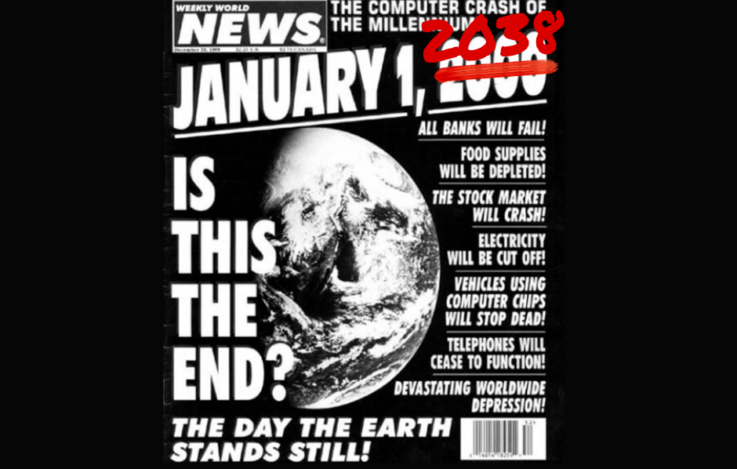Y2K38. What it is and What You Need to Know About it
November 17, 2023

Picture this: in the wild world of technology, we’ve encountered some notorious date-related glitches. You’ve probably heard of the infamous Y2K debacle that caused quite a commotion back in the late ’90s. Well, fast forward to the 21st century, and brace yourself for the potential turbulence of the Year 2038 problem. Now, you might be asking yourself, “What’s the big deal?” Worry not, my dear readers! This blog post will unravel the mystery of the Year 2038 problem in simple terms, so you can understand its significance without breaking a sweat.
What’s the fuss about the Year 2038 Problem?
Also known as the “Y2K38” or the “Unix Millennium Bug,” the Year 2038 problem is no less than a computer conundrum, stemming from the way our beloved machines handle time. It bears some resemblance to its predecessor, the Year 2000 problem, where computers grappled with transitioning from December 31, 1999, to January 1, 2000.
Essentially, the Year 2038 problem revolves around a limitation in the way certain computer systems store time using a 32-bit signed integer. This 32-bit value keeps track of the number of seconds since January 1, 1970, famously known as the Unix epoch. Confused? Fear not! Let’s simplify it even further.
Countdown to Chaos:
Imagine you have a trusty countdown timer that starts ticking on January 1, 1970. With every passing second, this timer races forward by one. It diligently records time for various tasks, such as file creation and event scheduling. But here’s the catch: this 32-bit integer can only tally up to 2,147,483,647 seconds. Once it hits this limit, the timer resets to a negative value.
The predicament arises when this timer reaches its maximum value on January 19, 2038 – precisely 2,147,483,647 seconds since the epoch. At that fateful moment, it rolls over to a negative number, indicating a date in December 1901. Sounds mind-boggling, doesn’t it? Well, this sudden jolt in time has the potential to wreak havoc on systems that rely on accurate timekeeping.
The Potential Consequences:
Now, you’re probably wondering, “What’s the big deal if my computer gets stuck in the past?” Brace yourself, my friends! The consequences can be far-reaching and impactful. Here are a few potential issues you should be aware of:
Data Corruption: Timestamps on files, database records, and transactions might go haywire, causing data corruption and potential loss.
Software Hiccups: Programs and applications that depend on accurate time calculations might throw tantrums, malfunctioning or crashing unexpectedly.
Security Quandaries: Security certificates that expire due to wonky dates could leave systems vulnerable to malicious cyberattacks.
Financial Woes: Financial systems reliant on precise timekeeping may encounter errors in transactions and reporting, leading to fiscal headaches.
So, my dear readers, hold onto your seats! The Year 2038 problem may seem distant, but its implications are worth paying attention to. Stay tuned, as we delve deeper into this time-related enigma and uncover strategies to mitigate its potential turmoil.
Solutions and Precautions:
Fortunately, the Year 2038 problem is not catching anyone off guard, and multiple efforts are already underway to address it. Some proposed solutions involve transitioning to a 64-bit time format, which can handle time values for billions of years into the future. Extensive work is being done to develop software updates and patches that will ensure systems are prepared for this change.
While the Year 2038 problem may not be as widely recognized as Y2K, it is a significant concern within the computing world. Having a basic understanding of this issue can assist individuals and organizations in taking the necessary steps to avoid potential disruptions. As technology continually advances, new challenges emerge, and it is crucial to stay informed to overcome them successfully.
Keep an eye out for updates on how the tech world is tackling the Year 2038 problem to ensure a seamless transition into the future.
To learn more about future IT projections and what you can do to protect your business, click here to chat with our team now.
TOSS C3 is the trusted Cyber Technology Services provider in Massachusetts specialized in serving law firms, libraries, local governments, and healthcare providers throughout the USA.

Subscribe now and stay up to date with News, Tips, Events, Cybersecurity, Cloud and Data Compliance.